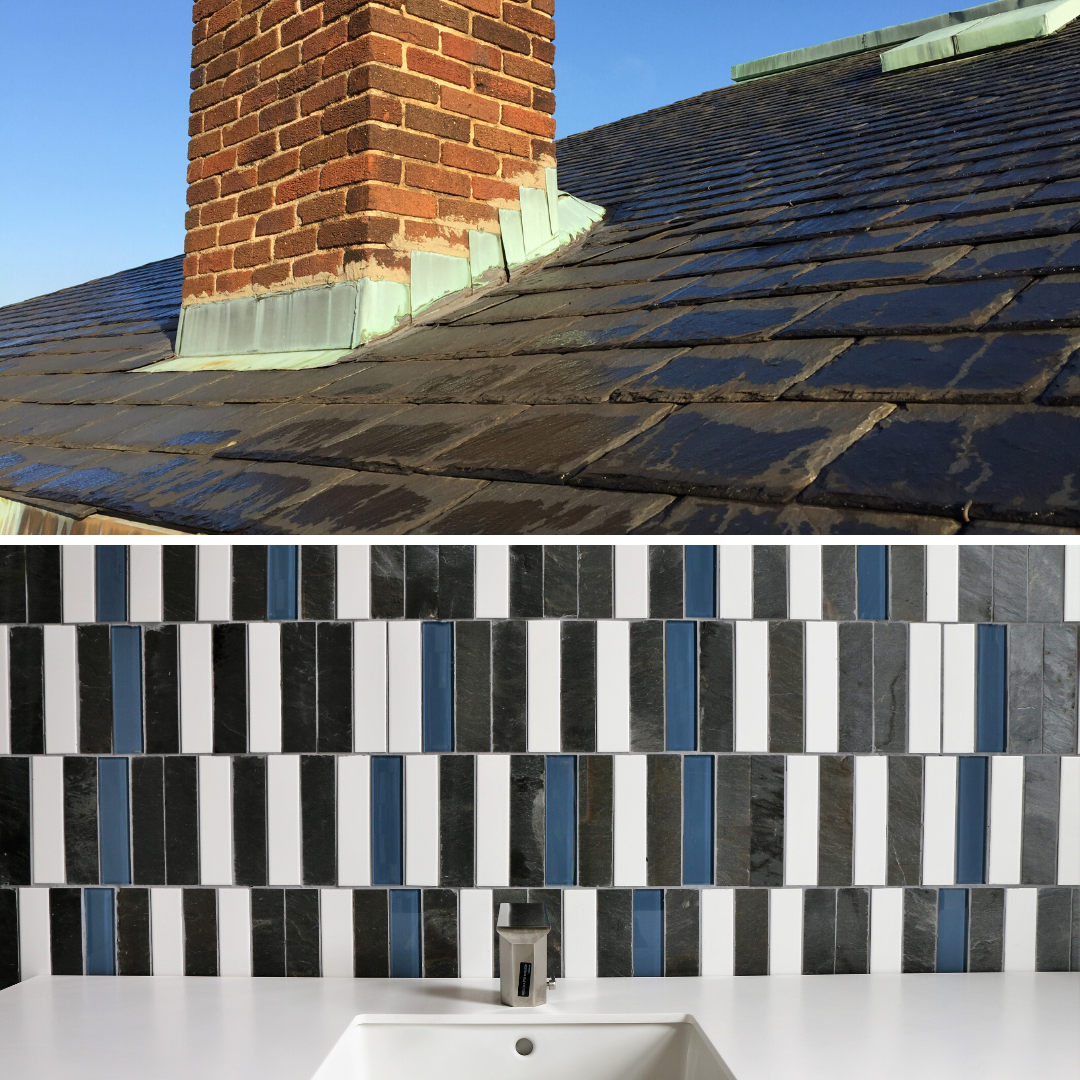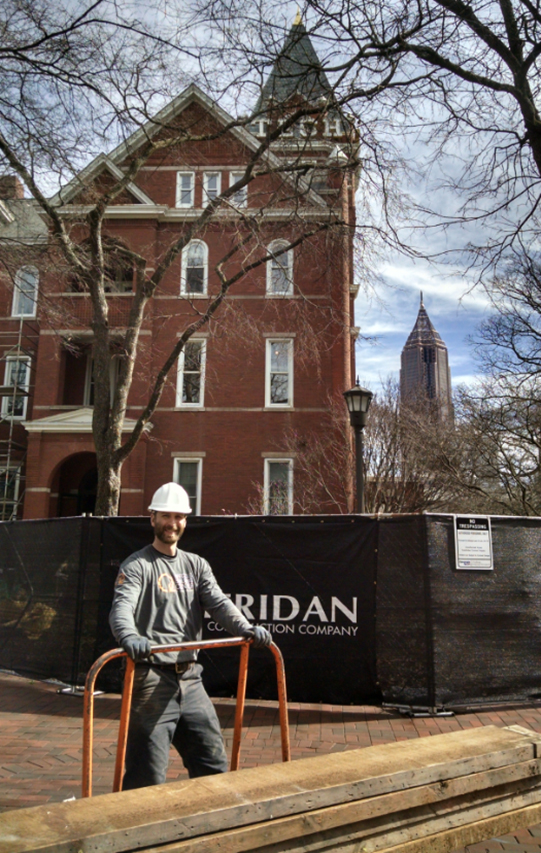Petal: Materials
Imperative 14: Net Positive Waste
Preserving Georgia Tech's Heritage
Construction and demolition (C&D) debris consists of materials used in buildings and infrastructure projects (e.g., roads and bridges). According to the EPA, 569 million tons C&D debris were generated in the United States in 2017 (the most current year for which data is available). This is more than twice the amount of waste generated from municipal sources (e.g., trash generated by building occupants).
C&D debris includes materials that could be reused such as steel, wood products, brick and clay tile, and concrete. To divert otherwise reusable C&D material from the landfill, construction of The Kendeda Building had to be net positive waste, meaning more items had to be salvaged than sent to the landfill.
The project team took this Imperative as an opportunity to salvage materials from iconic Georgia Tech buildings and incorporate them into The Kendeda Building. Slate roof tiles from the former Georgia Tech Alumni House became bathroom tiles in The Kendeda Building. Wood from the 2017 renovations of Tech Tower, which was erected in 1888, became stair treads in The Kendeda Building (see image below provided by the Lifecycle Building Challenge). By using salvaged wood from Tech Tower to constructed the common area staircase, the project saved $60,000 as compared to purchasing new materials.


